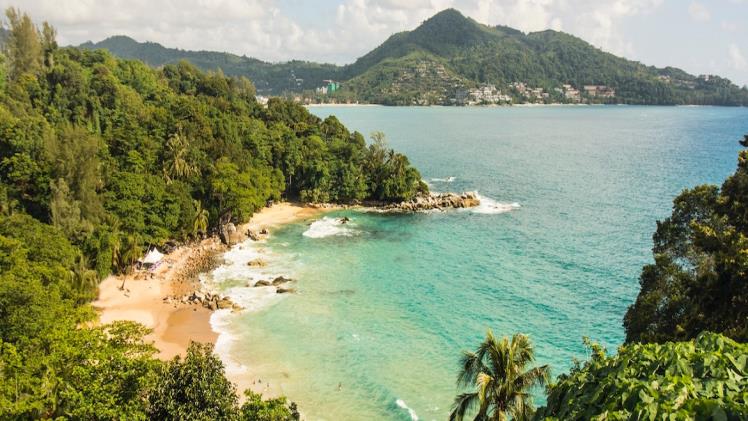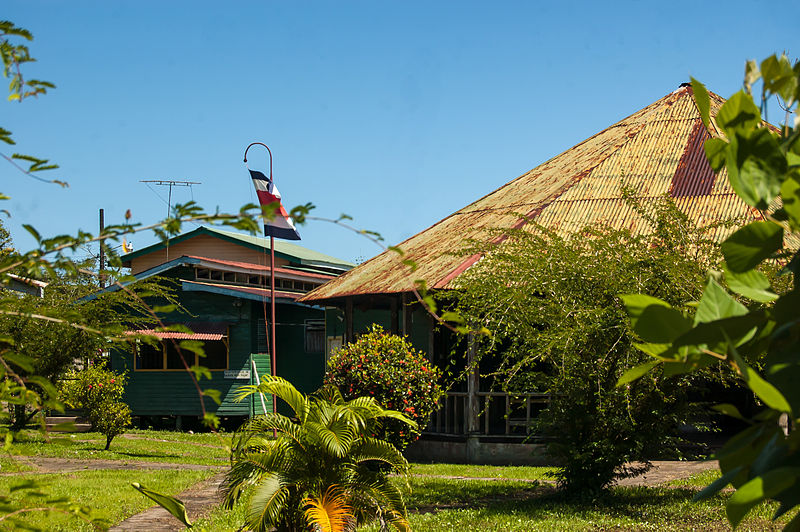Eco travel: Whether you’re looking to make more sustainable choices in your everyday life or want to leave a lighter footprint on the destinations you visit. Eco travel is all about making an impact. These dynamic destinations are rolling out initiatives to protect flora, fauna, and historic sites while giving back to local communities.
Iceland
One of the most popular destinations in Europe for eco travel. Iceland offers travelers an opportunity to experience some of the planet’s most stunning natural wonders. From spotting the Northern Lights to snorkelling between tectonic plates or hiking up a glacier. This Scandinavian island offers something for every nature lover. However, with overtourism and climate change threatening many of the natural features that attract visitors to Iceland. Responsible travel has become more important than ever.
The best way to ensure a responsible trip to Iceland is to book accommodations with local companies. Choose activities that support the local economy and community. This can be done by booking tours with a tour operator that prioritizes sustainability and is committed to protecting the environment, or by choosing accommodation that has received eco-labels.
Eating locally sourced food can also help reduce the impact of your trip. By eating a variety of foods that are grown, raised or caught in Iceland. You can cut down on the demand for food products from overseas that cause more pollution. And, since Iceland is powered by hydroelectric and geothermal energy sources. The electricity that you use to cook your meals will also be green.
While it may seem tempting to fly into Iceland as a quick getaway from other parts of the world, flying into Iceland contributes to the climate crisis just like any other country in the world. The good news is that you can offset the carbon emissions from your flight by donating to a project that captures carbon and helps restore Iceland’s nature and communities.
Throughout Iceland, locals are working to protect their beautiful land and wildlife. The island has implemented measures to limit the number of tourists that visit its most popular natural attractions in order to preserve their beauty. For example, tour buses are now banned from driving down. The main streets in the capital city of Reykjavik, giving more space to pedestrians. Additionally, the government is monitoring the capacity at natural sites and working to offer better information to tourists.
If you want to experience the unique culture of Iceland while also contributing to its preservation, consider taking a guided horse ride in South Iceland with Hotel Eldhestar. This hotel was the first in Iceland to receive an Eco-label for its daily operations and building processes. During your tour, you’ll be able to see the stunning landscapes of Iceland while learning about the country’s traditional herding practices and enjoying the company of an Icelandic horse breed known for its muscular body, thick coat, high spirits and friendliness.
Eco Travel in Norway
Norway is one of the world’s most eco friendly destinations. It’s gorgeous landscapes and environmentally oriented vacation options make it a popular destination for eco travelers. For example, Hurtigruten was the first major travel company to remove single-use plastic from its entire fleet of ships sailing along the Norwegian coast. They also support local communities through excursions and the sourcing of ingredients for their meals. In addition, they work to reduce their carbon footprint by operating hybrid electric-powered expedition cruises. By promoting the reuse of water and energy.
Norway has a great range of tours that offer the opportunity to experience its wilderness in a way that is sustainable and responsible. You can enjoy hiking, kayaking or ski trips to get close to fjords and mountains. Head into the north to Lofoten for a nature safari to see seals, sea eagles and killer whales. During the spring, you can also visit to see rivers, streams, waterfalls and brooks flowing with fresh snowmelt.
If you want to take it easy, there are plenty of public transport options to help you explore. Local ferries are great for island hopping around the fjords, and trains like the Bergen Railway, Rauma Railway, Ofoten Line and the Nordland Railway allow you to get to and from amazing destinations in comfort while making minimal impact on the environment.
Moreover, two-thirds of the city of Oslo consists of green space, and it was named European Green Capital in 2019. Despite the Nordic country’s famously cold climate, many of its residents are aware of their impact on the environment, and they are working hard to reduce their own carbon emissions.
The whole of Norway is becoming more and more eco friendly, and its tourism industry is following suit. The country has a Sustainable Destination label that is awarded to destinations that work systematically to reduce the negative impacts of tourism. Strengthen the benefits, as well as to develop their offering to be more sustainable. It has strict rules regarding waste management, energy consumption, transportation and requirements for subcontractors. Which helps to ensure that sustainable tourism is a priority for all of its enterprises and tourist attractions.
Eco Travel in Maine
Maine’s rugged coastline and pristine lakes provide plenty of outdoor adventure. You can go sailing, canoeing, white water rafting, paddle board paddling, fishing and hunting while being kind to the environment. And that’s just for starters. The northeastern state is also home to many historic tourist attractions. Such as Portland’s Old Port district with its charming seafood restaurants and small boutiques. Or, take a drive to Bar Harbor on Mount Desert Island to stroll along the shore or tour the famous Acadia National Park.
Away from the coast, the mountains of Maine’s interior are a hiker’s dream with a multitude of trails and hut-to-hut trail systems. Many of these huts are run by nonprofit organizations like the Maine Huts and Trails. Which has the mission of preserving the state’s backcountry for recreational use and stimulating economic development in rural western Maine.
Getting to know the landscape of Maine is important for both locals and visitors. Which is why the state makes it a point to preserve its natural environment for tourism. For example, billboards are prohibited on highways or near beaches because they can disturb the beauty of nature.
Another way Maine is promoting eco travel is by highlighting its most sustainable hotels and resorts. The state’s Green Lodging certification program requires that lodging properties save energy, conserve water and use environmentally friendly cleaning products. Some properties also offer preferred parking for hybrid and electric vehicles.
The Green Lodging program also promotes the state’s moose and wildlife conservation efforts. The state’s moose population has been in decline, which is why its Department of Inland Fisheries and Wildlife works to protect the animals and their habitats. The agency works with farmers to help moose avoid crossing roads and trains. As well as provides moose education to schoolchildren.
And, of course, no visit to Maine is complete without a stop at L.L. Bean in Freeport.
The iconic retailer supports sustainable tourism by ensuring local production of its products. Its flagship store is committed to supporting the communities it serves. The company even hosts a number of agricultural fairs during summer through fall in many of its stores and markets.
Florida Keys
Warm tropical breezes and cerulean waters have long drawn sun-seekers to Florida’s spectacular Keys, a 125-mile-long chain of islands that curves down from the state’s southernmost tip. But this dazzling arc of coral reefs and wild bird sanctuaries is also home to a delicate ecosystem that needs expert care, whether from fishermen or vacationers. Eco-friendly Keys adventures range from conservation and preservation museums to animal rehabilitation centers and botanical parks.
In Key Largo, the Eco-Discovery Center offers self-guided tours that teach about animal adaptations through interactive displays like an aquarium tunnel with skeletons of local sea creatures. On a guided tour, visitors can also visit the not-for-profit Dolphin Research. Education Center or take an Eco-Snorkel cruise to snorkel along the Florida Keys National Marine Sanctuary. The Key West Butterfly & Nature Conservatory is another must-visit for eco-travelers. It features a state-of-the-art solarium filled with living butterflies and birds.
As you drive across the Keys, stop at the Florida Keys Wild Bird Sanctuary in Tavernier to learn about 90 different species of feathered friends at a sanctuary that has an onsite rescue and rehab facility. At the Florida Keys Sea Turtle Conservation Center in Islamorada. You can view sea turtle eggs hatching on a live video feed in the turtle nursery.
Other Keys activities that are good for the environment include a kayak tour with an expert guide who can point out manatees. Dolphins and other wildlife as you paddle through the mangrove forest on the backcountry of Big Pine Key. You can also kayak the Florida Keys’ environmentally crucial mangrove tunnels on a tour offered by Adventures By Kayak in Key Largo.
The Keys’ tropical climate makes it a perfect place to eat and play in the water. From fishing charters out of Islamorada to snorkeling at John Pennekamp Coral Reef State Park. In Key West, pose for a selfie with a buoy that marks the Southernmost Point or watch the luminous sunsets at Mallory Square.
To keep your trip green, bring a refillable bottle of water and avoid buying overpriced souvenirs from overly-commercialized island gift shops. Also, be sure to pack reef-safe sunscreen; this area has banned sunscreens that contain. The chemicals oxybenzone and octinoxate to help preserve the Keys’ underwater landscapes.


